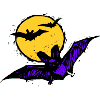Wildlife Disease and Zoonotics

Zoonotics and Wildlife Disease: Publications
Document Type
Article
Date of this Version
1997
Abstract
Between March 1981 and June 1995, a neurological disease characterized histologically by spongiform encephalopathy was diagnosed in 49 free-ranging cervids from northcentral Colorado (USA). Mule deer (Odocoileus hemionus) were the primary species affected and accounted for 41(84%) of the 49 cases, but six Rocky Mountain elk (Cereus elaphus nelsoni) and two white-tailed deer (Odocoileus virginianus) were also affected. Clinical signs included emaciation, excessive salivation, behavioral changes, ataxia, and weakness. Emaciation with total loss of subcutaneous and abdominal adipose tissue and serous atrophy of remaining fat depots were the only consistent gross findings. Spongiform encephalopathy characterized by microcavitation of gray matter, intraneuronal vacuolation and neuronal degeneration was observed microscopically in all cases. Scrapie-associated prion protein or an antigenically indistinguishable protein was demonstrated in brains from 26 affected animals, 10 using an immunohistochemical staining procedure, nine using electron microscopy, and seven using Western blot. Clinical signs, gross and microscopic lesions and ancillary test findings in affected deer and elk were indistinguishable from those reported in chronic wasting disease of captive cervids. Prevalence estimates, transmissibility, host range, distribution, origins, and management implications of spongiform encephalopathy in free-ranging deer and elk remain undetermined.


Comments
Published in Journal of Wildlife Diseases Vol 30, 1997. pp. 15,